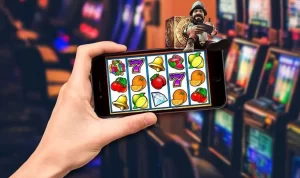
Do You Play Poker With Chips?
Many online poker games can be enjoyed without chips; however, their rules and general etiquette differ significantly without them – for instance two identical cards cannot tie at showdown.
One approach for playing poker without chips is using paper money from local currency as currency exchange rates can fluctuate regularly and may lead to inaccurate bets. Unfortunately, this option often wastes time and leads to inaccurate bets.
Game rules
Poker chips are an integral component of poker games, often constructed of plastic or clay and available in an assortment of colors and denominations. Chips help distinguish bets and raises among players as well as making counting opponents’ chips easier – although it would be unethical to mix all denominations together or hide one player’s highest denomination chips from view as this may provide clues for opponents that you have cheating intentions.
Your options for replacing poker chips include office supplies or spare change; however, this will depend on how much money is available – for instance a $10 bet can be created using five $1 chips and one $5 chip – however paper clips, rubber bands or post-it notes could make great alternatives as a replacement.
Betting intervals
Bet intervals in poker are a critical element of the game. Bets are placed by placing chips into the pot or calling one placed by another player, with each betting interval lasting until all bets have been equalized or until one of the players drops from competition.
Poker chips are typically organized according to color in order to distinguish among their denominations, with standard sets consisting of white, red and blue/green chips – though larger tournaments may use multiple-colored sets instead.
Food items, like pretzel sticks or candy, may serve as suitable replacements for poker chips in card games. Be wary of using foods which are easily unwrapped or eaten; doing so might give a poor image to the game. Keep track of bets using pen and paper; it’s a common way of keeping score in card games.
Variations
Poker chips vary considerably across casinos and poker rooms, using colors to distinguish chip values; all denominations have standard colors used by security systems for monitoring tables’ action, though knowing their value can be helpful in keeping track. It is essential that each chip be valued accordingly.
Dependent upon the game, 500 chips may or may not be enough for a full game. To save money and facilitate reuse, substitute items from board games as poker chips instead; just be wary not to introduce gambling into casual play; children may become hooked by associating winning with getting something they can keep; this could lead to significant problems later on and so it is wiser not to introduce gambling at this stage of learning.
Limits
Poker players use chips as money tokens, with the objective being to wrest them away from opponents by betting and bluffing. Chips also help track each player’s bets – although this system works great for poker, it could prove confusing in other structures of games.
Play money is an ideal way for introducing poker to young children without creating gambling associations.
Food items and candy can serve as ideal replacements for poker chips, such as edible potato wafers, Oreo cookies, biscotti, grains and cut up fruits. All players should understand what each color means as chips before using these as poker chips in a game.
Strategy
Playing poker without chips can be a fun and engaging way to pass time with friends and family while providing children with an educational experience. But playing for real money may lead to hostility between participants or lead them down an addictive gambling path, so it is best to refrain from using cash as playing pieces; food items or board game pieces make good replacements that won’t create as much of a mess!
To ensure fairness, it’s essential that a system for assigning different chip values be established. Most standard poker sets consist of white, red, green and black chips; you should consider writing out denominations on paper so all participants can see them easily.



Average Rating